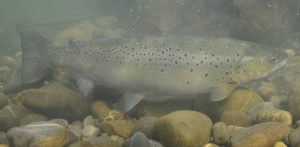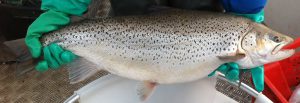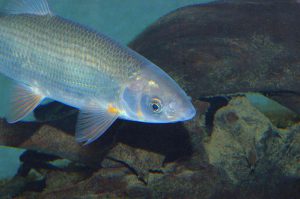Migratory Fish Working Group
In 1983, the IBKF established the migratory fish working group due to the alarmingly low migratory brown trout stock and yield. The main task of the group is to safeguard this endangered species as well as other migratory species.
Further clarifications were needed, however, in order to ensure the sustainability of migratory brown trout. For example, questions remained regarding when and how many migratory brown trout are present in which Lake Constance tributary and the extent of natural reproduction. In order to answer these questions and to protect the functionality of natural breeding areas, the Interreg IV project was run under the name “Migratory brown trout species preservation in Lake Constance tributaries” from 2010 to 2013.


The five tributaries “Rotach”, “Argen”, “Leiblach”, “Bregenzer Ach” and “Goldach” were selected for this study. The results are documented in a 200-page technical report, and the main results are summarized in a short report. The report proposes tributary-specific measures for the long-term protection of Lake Constance migratory brown trout.
The study program was funded by the contracting states and supported by the European Regional Development Fund (ERDF) under the INTERREG IV Program “Alpen Rhein-Bodensee-Rhein-Rhine”.
In addition, a genetic study was conducted by the University of Konstanz, in which the tissue samples were analyzed using molecular biological methods.
Based on the results of the various research projects, the migratory fish working group developed a management plan for the migratory brown trout that is available as a printed brochure. It contains principles and guidelines for the support and conservation of migratory brown trout in its natural distribution area. According to these guidelines, the consideration of geographical management units and the use of autochthonous stocking material from the breeding of wild fish in the upper reaches of the Lake Constance drainage basin are of central importance. In addition, it is necessary to promote the reproductive potential of migratory brown trout through the implementation of appropriate fishery regulations and the renaturation of existing hydromorphological deficits. The plan also emphasizes the importance of evaluating the impact of the regulatory measures and river restoration.
In addition to the migratory brown trout program the migratory fish working group will focus on the protection and recovery of the common nase population in the Lake Constance basin in the years to come.

Chair of the Migratory Fish Working Group
Dr. Roland Rösch
A complete address directory is published here.
